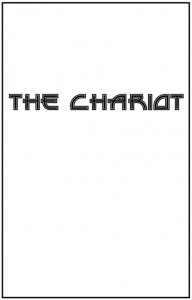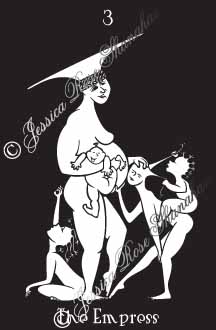 In the spring of 1995, I was gently nudged towards the path of feminism by my then-boyfriend, a man who would be affectionately known as My Favorite Former Lover for years to come. He was a god in bed, and with his artist’s touch he sculpted women into goddesses. I was in college majoring in writing and biology— a double major due more to indecision than ambition— and one of my classes was ANT 280: Human Evolution. Our assignment was broad: pick a topic in human evolution and write about it. A biologist by nature, left to my own devices I would have probably found something nice and dry to write about, such as the correlation between spinal curvature and cranial capacity between years X and Y. As it was, newly introduced to the concepts of neo-paganism and sexy-feminism, I chose to write about neolithic society and religion in southeastern Europe.
In the spring of 1995, I was gently nudged towards the path of feminism by my then-boyfriend, a man who would be affectionately known as My Favorite Former Lover for years to come. He was a god in bed, and with his artist’s touch he sculpted women into goddesses. I was in college majoring in writing and biology— a double major due more to indecision than ambition— and one of my classes was ANT 280: Human Evolution. Our assignment was broad: pick a topic in human evolution and write about it. A biologist by nature, left to my own devices I would have probably found something nice and dry to write about, such as the correlation between spinal curvature and cranial capacity between years X and Y. As it was, newly introduced to the concepts of neo-paganism and sexy-feminism, I chose to write about neolithic society and religion in southeastern Europe.
My paper was based largely on the work of the archaeologist Marija Gimbutas. Through her research, Gimbutas concluded that long-term, stable, woman-centered egalitarian societies were prevalent across neolithic Europe. Gimbutas earned a mixed reception by other scholars, who often considered her to be eccentric. However, her research and writings made her a keystone of the matriarchal studies movement and the Goddess movement. In short, I was searching for historical basis for my boyfriend’s religious belief.
Archaeology, like statistics, can easily slip into showing people what they want to see. Although the information gathered is unbiased, few people enjoy reading raw statistics and findings of archaeological digs without a good story attached. And archaeologists— like statisticians— like any good teller of a tale— lie.
Although goddess worship is largely a construct of women’s need for self-empowerment, this is not wrong. All worship leads to empowerment. Worship of one’s own god(s)— and I use the term without regards to sex— is a unifying and empowering act across society. One of the first things any successful conquerer does is suppress the religion of the subjugated realm. This squelches the people’s identity. In search of identity, the subjugated incorporate something of their conquerer’s beliefs.
Rebellion begins when one realizes the beliefs of the ruling party are unjust to one’s own needs. Feminism is a rebellion against the heavy hand of a patriarchal society. In order to empower ourselves, women need to see power in the ruling party. Neo-pagan goddess worship is often liberating for women who feel oppressed by the status-quo.
So, why is the Empress fat?
The Empress is representative of femininity and female fertility. She is beauty and the beauty of nature. She is creation and procreation. She is those things women hold solely in our domain, and thus the Empress is pregnant. This is goddess worship: worship of the female. Worship of women as we are as beautiful. Worship without the need to revert us into wiry, hairless adolescents. Worship of women’s bodies as powerful vehicles perfectly fit for birth, the act of which life itself depends on. The Empress is the most powerful women. She is powerful without needing to emulate the powerful aspects of men. In order to empower ourselves, women must be able to find the things that make us uniquely powerful— and to worship them.




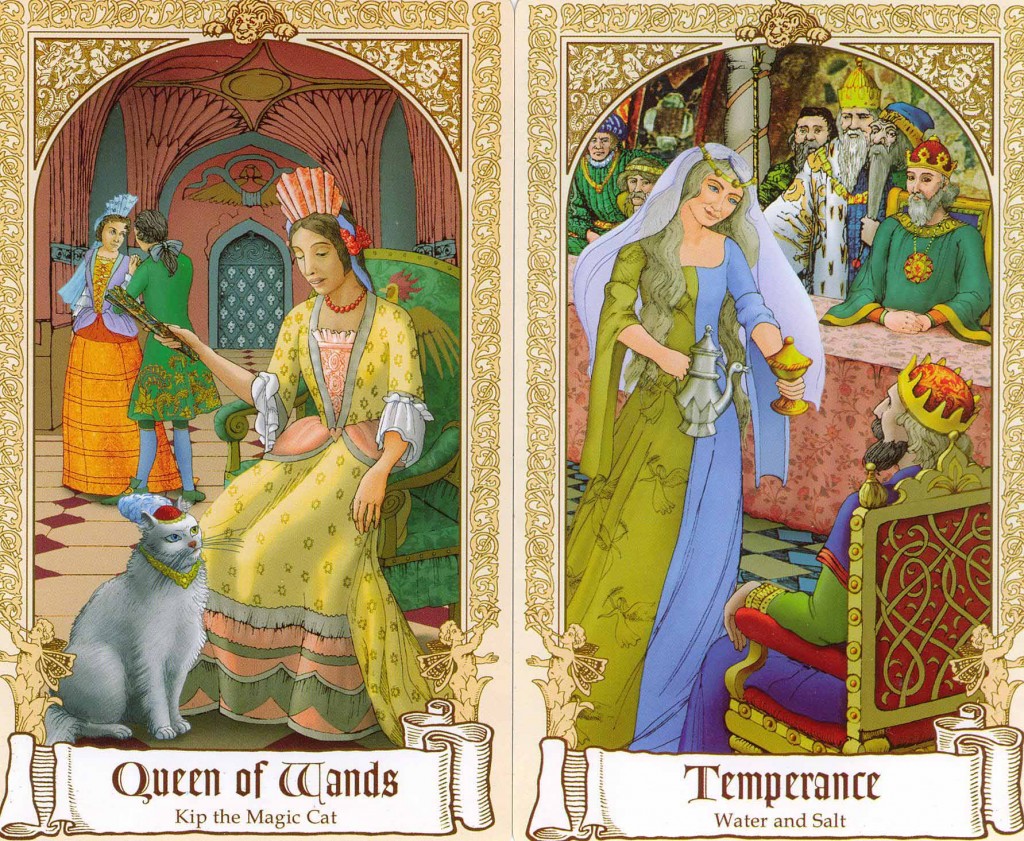
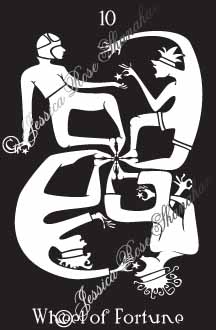
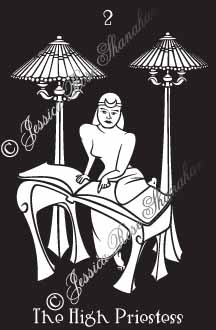 The High Priestess represents wisdom, knowledge and understanding. She holds the key to access the realm of the unconscious— the dreamworld— the underworld of the self. She learns by crawling into the book of knowledge, becoming that which needs to be known, learning by experience. She is the first to travel her chosen path. She learns her way intimately, then guides others by teaching us to do as she has. Along the way she tells us, “Listen. Listen to yourself. Pay attention. Be accountable for your decisions. Listen.” Her intuition is high. Her self-knowledge is deep. She does not waste her attention on superficial things.
The High Priestess represents wisdom, knowledge and understanding. She holds the key to access the realm of the unconscious— the dreamworld— the underworld of the self. She learns by crawling into the book of knowledge, becoming that which needs to be known, learning by experience. She is the first to travel her chosen path. She learns her way intimately, then guides others by teaching us to do as she has. Along the way she tells us, “Listen. Listen to yourself. Pay attention. Be accountable for your decisions. Listen.” Her intuition is high. Her self-knowledge is deep. She does not waste her attention on superficial things.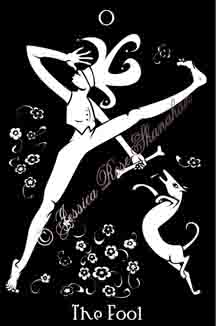

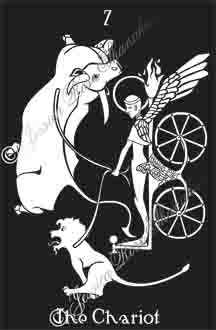
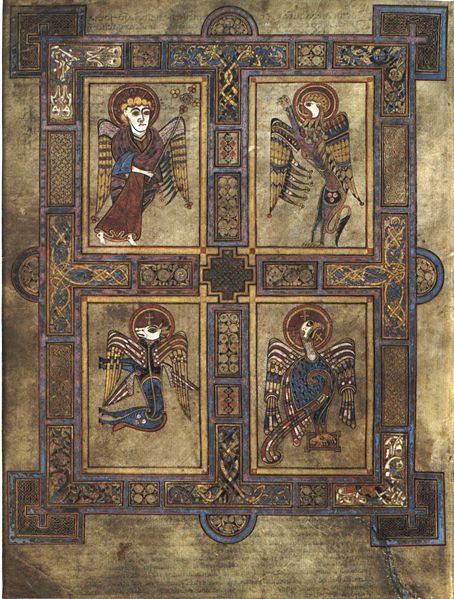
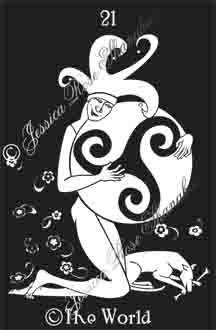
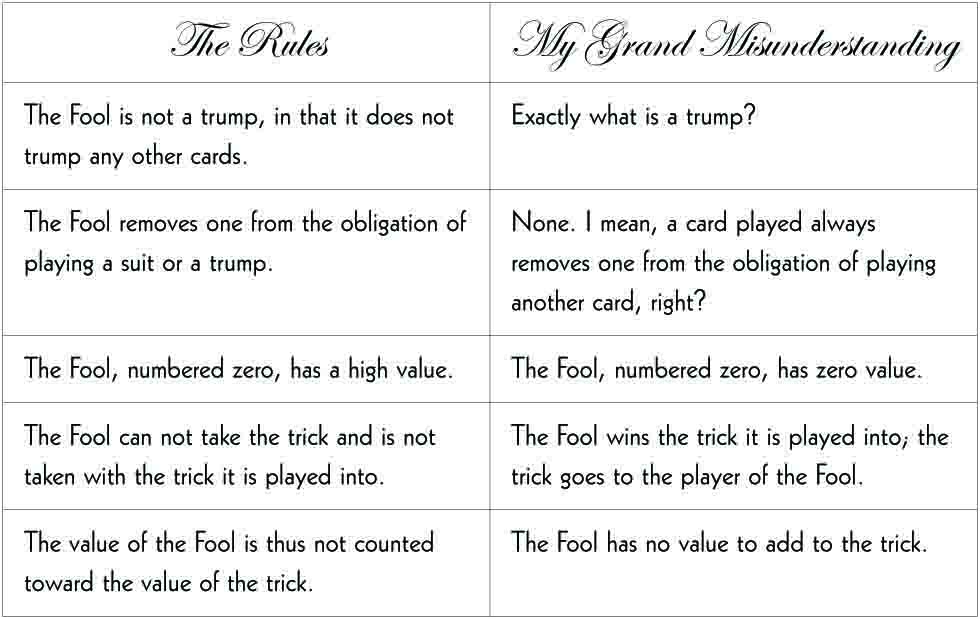
 This was one of the earlier cards I illustrated.
This was one of the earlier cards I illustrated.